Our man Aaron Frank gets to hang out with the beautiful and the important in Milan, attending an adrenaline-raising introduction for the new Yamaha YZF-R1. But a few of us back here at home actually got a tech briefing before he did, so let’s get to it.
Basically, the R1 is a new motorcycle. The aluminum Deltabox frame resembles the old R1’s but reduces wheelbase by 10mm—it’s now down to 55.9. Rake and trail remain the same at 24 degrees and 4.0 inches, respectively. But Yamaha looked everywhere for weight savings, including a new magnesium rear subframe; an aluminum fuel tank that’s 3.5 pounds lighter than an equivalently voluminous steel unit; and magnesium wheels that save a total of 1.9 pounds and reduce inertial moments by 4 percent front and 11 percent rear. KYB provides the suspension on the “base” bike, and that includes full adjustable front and rear, including high- and low-speed compression damping adjustments on the shock.
The result? Yamaha claims 439 pounds wet. A Honda CBR1000RR without ABS weighs 441 pounds wet, Kawasaki’s ABS-equipped Ninja ZX-10R weighs 443 pounds wet, and Suzuki’s non-ABS GSX-R1000 weighs 448 pounds wet.
Styling changes include new LED strip-style headlights supplemented with projector beams. The rear has a pair of Panigale-like open-air wings centered on an LED lamp assembly. There are elements of Yamaha’s victorious M1 MotoGP bike everywhere you look.
In the engine bay, it’s all change as well. It’s still a four-cylinder and it’s still a crossplane design, it continues the stacked-gearbox technology that allows for a shorter engine front to back. But, really, it’s all new. More oversquare than before, the R1 mill uses a 79mm bore with a 50.9mm stroke (the old one was 78mm by 52.2mm) and a whopping 13.0:1 compression ratio, up from 12.7:1 in the 2014 bike. Low-tension rings surround forged-aluminum pistons to reduce drag and increase power. The crossplane crank continues to eschew orthodoxy—the outboard pistons are 180 degrees apart, as are the inboard pair, but they’re offset so that the inboards and outboards are staggered 90 degrees to each other, hence the term crossplane. But it’s built lighter this year, said to have 20 percent less inertial moment than the ’14 bike’s. The crankcase is built to have a 2mm cylinder offset—the bores are 2mm forward of the crank centerline—to reduce cylinder-wall forces with an eye toward reducing friction. Finally, the connecting rods represent a first on a production motorcycle, using fracture-split titanium. (Fracture splitting means the big ends are formed as a single piece and then “broken” across a tool so that when reassembled the two pieces fit together with molecular precision.)
Yamaha’s latest four-cylinder breathes through a larger airbox (by 19 percent) and 45mm throttle bodies but remains a true ride-by-wire system with variable-length intake funnels. And while the dual overhead cams for the four-valve-per-cylinder engine remain directly over the valves, there are now pivoting rocker arms between the cam faces and the followers. Yamaha says this configuration permits more aggressive cam profiles.
Ultimately, the watchword here has been weight reduction. Yamaha says the engine is 9 pounds lighter than before—in part because of a high proportion of aluminum fasteners and magnesium for the oil pan and engine covers—and it’s 1.2 inches narrower at the crank. No power figures have been released.
No supersport is complete without modern electronics, and this is where the R1 has arguably made the most ground. While it carries over four ride modes that determine throttle response, that’s just the beginning. With a new IMU (inertial measurement unit), the R1 packs the ability to measure vehicle movement in every axis, with dedicated sensors for pitch, roll, and yaw. In essence, the IMU will know where the bike is and what it’s doing at every instant.
Leveraging this incredible amount of information are all-new systems include traction control, slide control, lift (wheelie) control, launch control, and quickshift. TC and wheelie control you can understand, but slide control will allow the bike to slide the rear end in a predictable manner, only intervening when certain accelerations and/or slip angles are present. In other words you can hang it out with impunity knowing that the computer will do its best to keep you out of trouble.
Each “control” system can be tailored by the rider. TC has 10 settings (including off) that uses wheel-speed differential in addition to lean angle to determine intervention thresholds. Slide control adjust to one of four settings (including off). Wheelie control has four settings including off. Launch control has three settings (including off) and works to limit max rpm to 10,000 with wide-open throttle and tailors power output in conjunction with the TC and wheelie control systems. Finally, the quickshift system (upshifts only) can be adjusted to one of three levels including off.
And here’s the really cool part. The clear and comprehensive menu system presented on the new TFT LCD instrument panel allows you to define four basic configurations that can be further tailored as you see fit. There’s no “locking in” certain functions based on mode. You can define any level of the aforementioned control systems and fix them at those settings in any of the four primary modes.
One of those modes includes ABS activation. Yes, the R1 now has ABS, and it’s both standard and a new form of Yamaha’s unified braking system. In essence, the bike will apply a small amount of rear brake when only the fronts are activated when the IMU determines that a little rear brake would add chassis stability. Unfortunately, there’s no “off” option, we’re told.
So much technology comes at a price, in this case it’s $16,490, which is $2,200 over a non-ABS 2014 R1. But it’s lighter by 15 pounds and massively better equipped to do battle with the electronics-heavy Europeans. And that most assuredly counts for something.










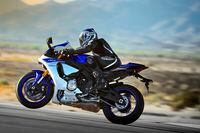
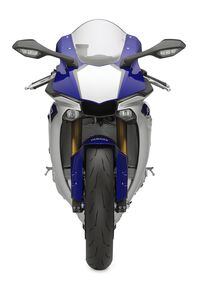
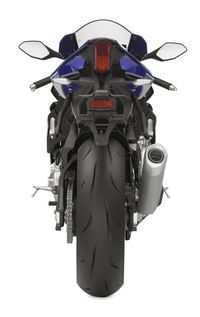
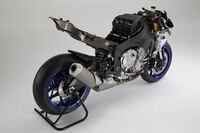
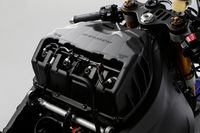

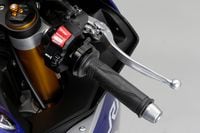
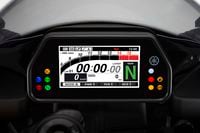

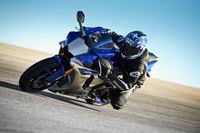
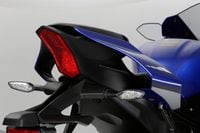
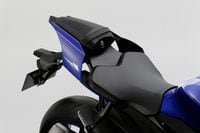


/cloudfront-us-east-1.images.arcpublishing.com/octane/OKWOJWAKP5EP3OACCRRWPCIX2Q.jpg)
/cloudfront-us-east-1.images.arcpublishing.com/octane/2WF3SCE3NFBQXLDNJM7KMXA45E.jpg)
/cloudfront-us-east-1.images.arcpublishing.com/octane/G4MG6OUCJNBSHIS2MVVOTPX65E.jpg)
/cloudfront-us-east-1.images.arcpublishing.com/octane/IIGGWFOTOJGB7DB6DGBXCCMTDY.jpg)
/cloudfront-us-east-1.images.arcpublishing.com/octane/QSTCM6AVEZA5JJBUXNIQ3DSOF4.jpg)
/cloudfront-us-east-1.images.arcpublishing.com/octane/U4I7G625B5DMLF2DVIJDFZVV6M.jpg)
/cloudfront-us-east-1.images.arcpublishing.com/octane/B6XD6LS6IVCQPIU6HXDJSM3FHY.jpg)
/cloudfront-us-east-1.images.arcpublishing.com/octane/ICL63FEDDRDTTMINYICCEYGMDA.jpg)
/cloudfront-us-east-1.images.arcpublishing.com/octane/FCGZHQXRBZFLBAPC5SDIQLVF4I.jpg)
/cloudfront-us-east-1.images.arcpublishing.com/octane/WNOB6LDOIFFHJKPSVIWDYUGOPM.jpg)

/cloudfront-us-east-1.images.arcpublishing.com/octane/X33NU3E525ECRHXLNUJN2FTRKI.jpg)
/cloudfront-us-east-1.images.arcpublishing.com/octane/6KKT5NNL2JAVBOXMZYS5ZO76YA.jpg)
/cloudfront-us-east-1.images.arcpublishing.com/octane/J5RKG5O455GMPGQRF2OG6LRT7A.jpg)
/cloudfront-us-east-1.images.arcpublishing.com/octane/GX2CIZKQVRH2TATDM26KFG2DAE.jpg)
/cloudfront-us-east-1.images.arcpublishing.com/octane/ZWIDYSAKQZHD5BHREMQILXJCGM.jpg)
/cloudfront-us-east-1.images.arcpublishing.com/octane/CYUHJZCTSJCH3MRAQEIKXK7SCQ.jpg)
/cloudfront-us-east-1.images.arcpublishing.com/octane/LKOFINY56FCXJCANJ5M7ZDQUBY.jpg)
/cloudfront-us-east-1.images.arcpublishing.com/octane/4NBPDACMWJH63JQYJVK3QRBDZI.jpg)
/cloudfront-us-east-1.images.arcpublishing.com/octane/KKHQHRR3FJGX7H2IPU6RALMWG4.jpg)

/cloudfront-us-east-1.images.arcpublishing.com/octane/5IOFS5JAE5FOXMNA23ZRAVVYUU.jpg)
/cloudfront-us-east-1.images.arcpublishing.com/octane/CGXQ3O2VVJF7PGTYR3QICTLDLM.jpg)
